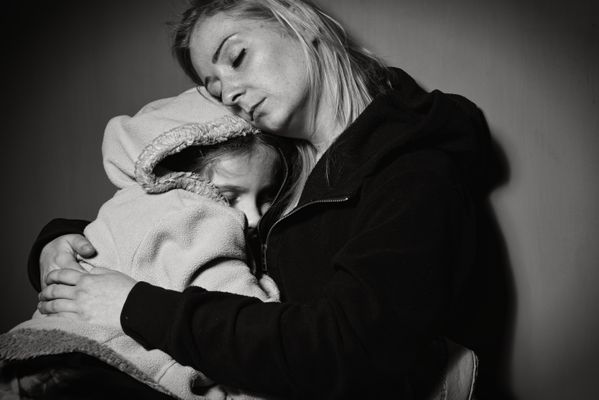4.2.2
Changing Attitudes to Family
The Family Between 1917 and 1935
The Family Between 1917 and 1935
There was a tension between conservative and radical views on marriage in this period. Lenin and his party tried to offer reforms which reduced abuses in marriage.


Alexandra Kollontai's view of the family
Alexandra Kollontai's view of the family
- Alexandra Kollontai preferred the idea of communal free love to traditional family groups.
- There were a number of experiments in communal living, but these rarely made it past the mid-1920s.


Lenin's view of the family
Lenin's view of the family
- Lenin was more traditional and did not favour free love.
- He supported a number of proposals to counter some of the abuses which went on in traditional marriages:
- Readily available abortions.
- Access to contraception.
- The legalisation of prostitution.
- The legalisation of homosexuality.
- These were extremely progressive positions.


Divorce
Divorce
- Divorce rates went up after laws were relaxed.


Historical assessment
Historical assessment
- Paul Ginsborg (2016):
- Ginsborg argues that Lenin agreed with Kollantai that housework and childcare needed to be collectivised in order to liberate women. Indeed, in a 1919 pamphlet, Lenin wrote that Russian women were still 'domestic slaves.' However, he did not agree with Kollantai that human relationships needed to change as part of the revolution. He was particularly against her revised vision of sexual morality.


Historical assessment cont.
Historical assessment cont.
- Sheila Fitzpatrick (1999):
- ‘The upbringing of children is normally considered women’s business, and so it was in Soviet Russia in the 1930s. It was women, not men, who wrote again and again to the authorities asking for help for their children, “barefoot and hungry.”'
- The most common type of appeal from urban citizens was a written request for help in tracing an absent husband and collecting family support payments. Aleksandra Artiukhina, chairwoman of a large trade union with many women members reported that “thousands of letters come to me at the union from worker women about seeking their husbands.”
The Family Between 1936 and 1953
The Family Between 1936 and 1953
Family policy became stricter and more traditional in Stalin's dictatorship.


'The great retreat'
'The great retreat'
- Family policy became more conservative as Stalin’s grip on power tightened.
- Trotsky, who was in exile, called this ‘the great retreat’.


Stalin's aims for the family
Stalin's aims for the family
- Stalin aimed to cut divorce rates and increase births. He thought more stable family units would help the economy.
- Abortion was made illegal unless the mother’s life was in danger.
- Contraception was made illegal.
- Male homosexuality could now be punished by up to five years’ hard labour.
- Lesbian women now underwent hypnotherapy as a ‘cure’.


Divorce
Divorce
- Divorce became more expensive, and the price increased for subsequent attempts.
- After a divorce, men were required to give one-third of their wages to the woman to help support their children.


Higher birth rates
Higher birth rates
- Financial incentives were used to encourage higher birth rates.
- Having seven children could earn a woman 2,000 roubles a year for five years of the child’s life.
- 11 children granted a woman 5,000 roubles each year.


Historical assessment
Historical assessment
- Sheila Fitzpatrick (1999):
- 'In May 1936, the government put out a draft law to strengthen the family whose most notorious aspect was the prohibition of abortion. This came as a shock to many party and intelligentsia members, since the removal of Tsarist prohibitions had been a conspicuous part of early Soviet “liberationist” legislation.'


Historical assessment cont.
Historical assessment cont.
- Sheila Fitzpatrick (1999):
- 'If earlier generations of scholars perceived the social conservatism embodied in the legal changes of 1936 as a volte face, it is now interpreted as the culmination of trends already observable in the 1920s. This shift in interpretation has occurred not so much because of new research. Rather, it reflects a paradigmatic change involving a reconsideration of the standard against which Soviet policies are measured.’
1Communist Government in the USSR, 1917-85
1.1Establishing Communist Party Control, 1917-24
1.2Stalin in Power, 1928-53
1.2.1The Elimination of Opponents
1.2.2The Purges of the 1930s
1.2.3End of Topic Test - The Elimination of Opponents
1.2.4Stalin's Power Over the Communist Party
1.2.5Stalin's Power During & After the Communist Party
1.2.6End of Topic Test - Power Over the Communist Party
1.2.7A-A* (AO3/4) - Stalin in Power
2Industrial & Agricultural Changes
2.1Towards a Command Economy
2.2Industry & Agriculture in the Stalin Era
3Control of the People, 1917-85
3.1Media, Propaganda & Religion
3.2The Secret Police
4Social Developments, 1917-35
4.1Social Security
4.2Women & Family
5Historical Interpretations
5.1What Explains the Fall of the USSR, 1985-91?
5.1.1Economic Weakness
5.1.2Attempts at Economic Reform
5.1.3Failure To Reform The Communist Party & Soviet Gov
5.1.4Impact of Reforms
5.1.5End of Topic Test - Economic Reform
5.1.6Impact of the Nationalist Resurgence
5.1.7Impact of the Nationalist Resurgence 2
5.1.8End of the USSR
5.1.9Gorbachev & Yeltsin's Responsibility
5.1.10End of Topic Test - Nationalist Resurgence
5.1.11A-A* (AO3/4) - Explaining the Fall of the USSR
Jump to other topics
1Communist Government in the USSR, 1917-85
1.1Establishing Communist Party Control, 1917-24
1.2Stalin in Power, 1928-53
1.2.1The Elimination of Opponents
1.2.2The Purges of the 1930s
1.2.3End of Topic Test - The Elimination of Opponents
1.2.4Stalin's Power Over the Communist Party
1.2.5Stalin's Power During & After the Communist Party
1.2.6End of Topic Test - Power Over the Communist Party
1.2.7A-A* (AO3/4) - Stalin in Power
2Industrial & Agricultural Changes
2.1Towards a Command Economy
2.2Industry & Agriculture in the Stalin Era
3Control of the People, 1917-85
3.1Media, Propaganda & Religion
3.2The Secret Police
4Social Developments, 1917-35
4.1Social Security
4.2Women & Family
5Historical Interpretations
5.1What Explains the Fall of the USSR, 1985-91?
5.1.1Economic Weakness
5.1.2Attempts at Economic Reform
5.1.3Failure To Reform The Communist Party & Soviet Gov
5.1.4Impact of Reforms
5.1.5End of Topic Test - Economic Reform
5.1.6Impact of the Nationalist Resurgence
5.1.7Impact of the Nationalist Resurgence 2
5.1.8End of the USSR
5.1.9Gorbachev & Yeltsin's Responsibility
5.1.10End of Topic Test - Nationalist Resurgence
5.1.11A-A* (AO3/4) - Explaining the Fall of the USSR
Unlock your full potential with Seneca Premium
Unlimited access to 10,000+ open-ended exam questions
Mini-mock exams based on your study history
Unlock 800+ premium courses & e-books